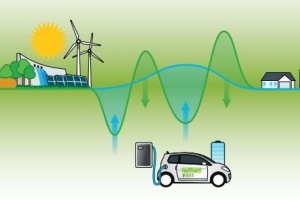Global energy and the IoT – Part 1

At Beecham Research, our sector map helps us to define the IoT, breaking it down into service sectors such as Energy, Transport and Retail. Within each sector we define groups of applications, the locations where these are used and the type of hardware devices that are connected to them.
The ‘Energy’ sector for example includes the supply and demand sides of electricity generation along with the extraction and use of fossils fuels. On a global level these industries are vast, representing somewhere in the region of 8%-10% of Gross World Product (GWP). In 2014 GWP stood at $73.7 trillion in nominal US dollar terms.
This implies the Energy sector is worth somewhere between $6 trillion and $7 trillion per annum, with the generation of electricity being around a half of that number at some $3.5 trillion, says David Parker, senior analyst, Beecham Research.
The sheer scale of the industry needs some objective consideration. The World Bank say that 84% of humanity had access to grid electricity in 2015. Factoring this number with average global household size equates to around 1.5 billion consumer meters, 380 million in China alone.
In addition to domestic households there are a few hundred million office, industrial, retail and public buildings, representing an IoT market opportunity for smart meters of around 2 billion connections. And with 1.2 billion of humanity still waiting for the grid and the meter to reach them, the number of potential connections will grow.
Some countries are well advanced with smart meter installations, as of January 2017 some 64.7 million had been installed in the USA, almost 50% of households. Yet smart metering is only one aspect of monitoring and measuring the generation, distribution and consumption of electricity.

David Parker, senior analyst, Beecham Research
Between the points of generation and consumption sit many devices, active and passive carrying and regulating power. These include active devices such as transformers, switchgear, fuses, isolators, re-closers and feeder cables. Management of the grid will improve when these devices in the high, medium and low voltage segments of the grid are all monitored, along with passive objects such as grid poles carrying low voltage power lines.
The benefits include improved availability, faster time to rectify faults, reduced power loss and most important of all, the optimisation of supply to demand on a real-time basis. For every million customer meters there are between 250,000 and 500,000 other elements in the transmission and distribution grid, representing perhaps another 500 million potential connection points globally for the IoT supply chain to address.
For businesses offering IoT services, the opportunities are not only quantitative in nature. The generation, distribution and consumption of electrical energy includes a wide variety of applications with specific connecting hardware and telecommunications technologies.
High voltage re-closers for example are mission critical and often monitored using satellite services which offer high levels of availability. Also, point to point UHF radio services are used where high availability and redundancy are crucial to service operations. Utilities have tended to build their own private networks for these mission critical parts of their operations, although the trend is toward outsourcing.
On the low voltage part of the grid it would not make financial sense to use these technologies to know if a passive device like a pole is standing upright, leaning or otherwise damaged but sensors can now connect to Low Power Wide Area (LPWA) networks for a few dollars a year with a battery life of 10 years or more for the sensor.
The growth of renewable energy, wind, solar and biomass, has de-centralised energy generation and adding complexity. The need to connect and manage these disparate sources which are often dependant on weather conditions and time of day is a requirement of connecting them to the grid.
The data coming from renewable energy sources has led to the emergence of companies who analyse the data on behalf of utilities, advising generators when is the optimum time to sell power based on levels of sunlight, wind strength and real-time demand for electricity.
The author of this blog is David Parker, senior analyst, Beecham Research
Comment on this article below or via Twitter @IoTGN
